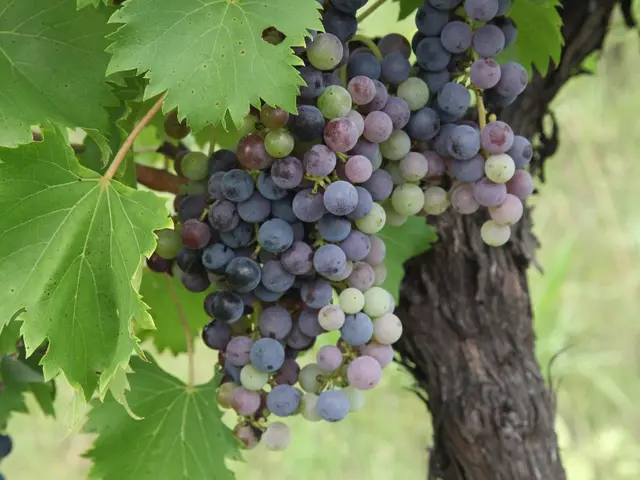Essential Guide on Strategic Plant Pairing: Companion Planting Techniques Explained
In the world of gardening, the art of companion planting has been long recognised as a powerful tool for creating a thriving garden. From repelling pests to improving soil nutrients, this method of planting can make a significant difference in the health and productivity of your garden.
One of the most comprehensive resources for understanding which plants work well together can be found at First Tunnel. The list includes a variety of combinations that have been proven to thrive in close proximity.
For instance, rosemary is a popular choice for gardens, not just for its aromatic qualities but also for its pest-repelling properties. Pairing rosemary with brassicas like cabbage, broccoli, Brussels sprouts, and root vegetables such as carrots and parsnips can help protect these plants from harmful insects.
Another beneficial pairing is rosemary and sage, which grow well together due to their shared pest-repelling properties and similar growing conditions. Onions, another strong-scented plant, make a great companion for rosemary, offering even stronger pest control.
Marigolds, known for their vibrant colours and pest-repelling properties, are another essential addition to any garden. Planting marigolds alongside thyme, salvia, bachelor’s buttons (cornflower), and lantana can help repel pests like aphids and corn earworms, while attracting pollinators.
Borage, with its star-shaped flowers, is a great companion for tomatoes, squash, and strawberries. Not only does it help repel tomato worms, but it also improves the flavours of neighbouring plants.
Broccoli and Brussels sprouts benefit from companions like beets, carrots, dill, marigolds, mint, nasturtiums, onions, rosemary, sage, and thyme, which repel pests and attract beneficial insects.
The classic "Three Sisters" combination of corn, beans, and squash is an example of mutual benefits. Corn provides a stalk for beans to climb, beans enrich the soil with nitrogen, and squash shades the soil to reduce weeds and retain moisture.
Tomatoes and eggplants, when grown tall, can provide shade to delicate, low-lying plants like lettuces, extending the lettuce season. Nasturtiums, with their unique scent, repel garden pests and attract beneficial insects.
Growing legumes in different areas of the garden can improve the nutrient profile of the soil, as legumes like clovers and vetches can take nitrogen from the air with the help of certain soil microbes.
Melons, squash, and flowering herbs grown together can help increase the season's yield and boost plant health. However, it's important to note that diseases can spread more quickly when the same varieties of plants are grown closely together.
Calendula flowers, with their sticky substance that traps aphids, can minimise aphid infestation. And remember, shade-tolerant plants like lettuce need protection from taller, sun-loving plants. Sturdy bushes can protect young bush beans from the wind, while tall plants can serve as a pole for climbing plants.
Basil grown alongside tomatoes makes tomatoes resistant to bugs, increasing yield. Growing chives and roses side by side can protect flowering plants from pests and extend their blooming season. Intercropping beans with other vegetables can boost plant health and improve yield.
In conclusion, companion planting offers a natural and effective way to create a healthier and more productive garden. By understanding the benefits of plant combinations, gardeners can create a harmonious ecosystem that thrives together.
In the realm of home-and-garden lifestyle, exploring companion planting ideas can help establish a thriving garden. For instance, growing herbs like rosemary, basil, thyme, and sage in your home-and-garden can not only improve your culinary lifestyle but also repel pests and boost the health of your garden.
Furthermore, incorporating a diversity of plants, such as marigolds, calendula, borage, and nasturtium, into your home-and-garden can create an intricate web of pest control, attracting pollinators, repelling harmful insects, and ensuring a productive home-and-garden lifestyle.




